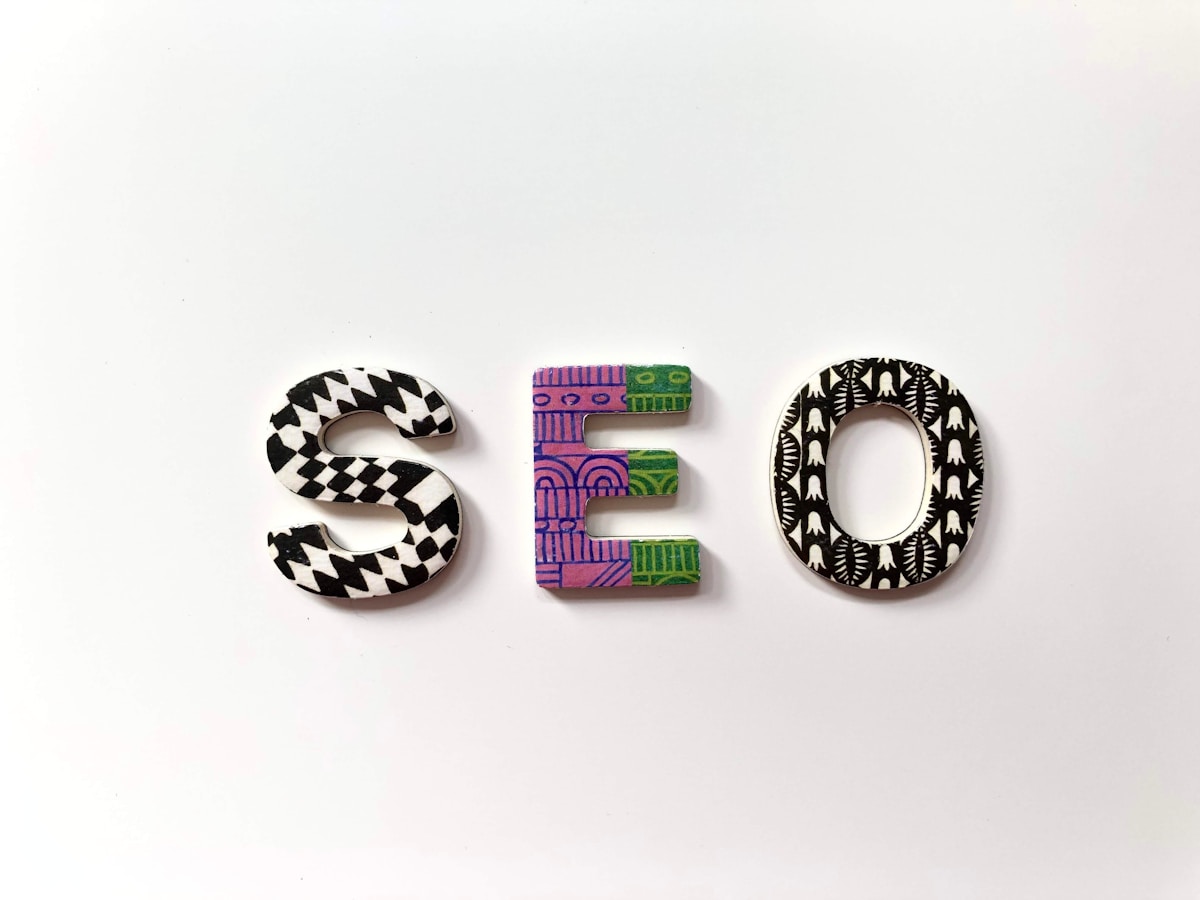Secret To Conversions Unlocked: A Deep Dive Into Ecommerce Website Design
Secret To Conversions Unlocked: A Deep Dive Into Ecommerce Website Design

Ecommerce website design plays a crucial role in the success of any online business. A well-designed website can significantly boost conversions and drive more sales. In this guide to ecommerce website design, we will explore the importance of a well-designed website, how to design an ecommerce website, how it can enhance conversions, and introduce the secret to unlocking higher conversion rates.
The Importance Of Ecommerce Website Design
The design of your ecommerce website is the first impression potential customers have of your brand. It sets the tone for their shopping experience and can make or break their purchase decision. A visually appealing and user-friendly website creates a positive impression and instills trust in your brand.
How A Good Ecommerce Web Design Can Boost Conversions
A well-designed ecommerce website has the power to drive higher conversion rates. You can create a seamless shopping journey that encourages visitors to take action by optimizing user experience (UX) through intuitive navigation, clear product descriptions, and compelling visuals. A visually appealing layout combined with persuasive call-to-actions (CTAs) can entice users to purchase, resulting in increased conversions.
Introducing The Secret To Unlocking Conversions
The secret to unlocking higher conversions lies in understanding and implementing effective ecommerce web design strategies. You can create an ecommerce website that maximizes its potential for driving conversions by focusing on key elements such as user experience, mobile responsiveness, streamlined navigation, compelling product pages, optimized checkout processes, engaging CTAs, SEO optimization, and fast loading times.
With this comprehensive guide to ecommerce website design tips and best practices, you will learn how to optimize every aspect of your online store for maximum conversion potential. Incorporating these strategies into your website design can take your ecommerce conversions to the next level and achieve greater success in the competitive online marketplace.
Understanding The Fundamentals Of Ecommerce Website Design

Ecommerce website design is crucial in attracting and engaging customers, ultimately leading to higher conversions. It is important to understand the fundamentals of design and how they impact user experience (UX) and conversions to create an effective ecommerce website.
The Role Of User Experience (UX) In Ecommerce
In ecommerce, user experience (UX) is the heart of conversion. Make it seamless and enjoyable by focusing on user-friendly navigation, an intuitive layout, and easy-to-use features.
UX also means helping visitors find what they want. Organize products using search and filters for quick navigation.
And remember the checkout. Keep it simple and clear to minimize any hurdles in the buying process.
Key Elements Of Effective Ecommerce Website Design
Several key elements should be considered to create an effective ecommerce website design:
- Visual Appeal. Use high-quality images and visually appealing graphics to showcase products enticingly. Incorporating consistent branding elements such as colors, fonts, and imagery for a cohesive look throughout the site.
- Clear Call-to-Actions (CTAs). Utilize clear and compelling CTAs throughout the site to guide users toward desired actions, such as adding items to a cart or purchasing.
- Intuitive Navigation. Ensure your website's navigation is easily understood and used across different devices. Use logical menu structures and breadcrumbs to help users navigate your site effortlessly.
- Responsive Design. With the increasing use of mobile devices for online shopping, it is crucial to have a responsive design that adapts seamlessly to different screen sizes. It ensures a consistent and user-friendly experience across all devices.
Mobile Responsiveness And Its Impact On Conversions
Mobile responsiveness is a game-changer in ecommerce design. As mobile shopping surges, your website must adapt to smaller screens seamlessly.
Why? Because it's not just about user experience; it's about conversions. Studies confirm that mobile-friendly sites score higher conversion rates. Don't miss out on mobile shoppers—optimize your site for more customers.
Best Practices For Ecommerce Web Design

When designing an ecommerce website, several best practices can help enhance user experience and drive conversions. You can create an effective ecommerce website that attracts and engages customers by streamlining navigation and site structure, creating clear and compelling product pages, and incorporating high-quality product images and videos.
Streamlining Navigation And Site Structure
One of the key elements of a well-designed ecommerce website is a streamlined navigation system. Users should be able to easily find what they're looking for without getting lost or frustrated. Here are some ecommerce website design tips for optimizing navigation:
- Keep it simple. Limit the categories in your main navigation menu to avoid overwhelming users.
- Use descriptive labels. Clearly label each category or section so users know exactly what to expect when they click on it.
- Implement breadcrumbs. Breadcrumbs provide users with a clear path back to previous pages, making it easier for them to navigate.
- Include a search bar. Adding a search bar allows users to find specific products or information quickly.
Optimizing your website's navigation and structure can ensure that users can easily navigate your site, leading to increased conversions.
Creating Clear And Compelling Product Pages
The product pages on your ecommerce website play a crucial role in convincing customers to purchase. Here are some tips for creating clear and compelling product pages:
- Use high-quality images. Include multiple images that showcase different angles or features of the product. It helps customers get a better sense of what they're buying.
- Write detailed descriptions. Provide thorough descriptions highlighting the product's key features, benefits, and specifications.
- Include customer reviews. Displaying customer reviews helps build trust and credibility, as potential buyers can see real feedback from previous customers.
- Add social proof. Incorporate badges or icons that indicate popular products or best sellers to create a sense of urgency and encourage conversions.
You can effectively showcase your products and persuade customers to purchase by creating clear and compelling product pages.
Incorporating
High-Quality Product Images And Videos
Visual content is a powerful tool in ecommerce website design. High-quality product images and videos can significantly impact conversions by giving users a visual representation of the product. Here's how you can incorporate visual content effectively:
- Use high-resolution images. Ensure your product images are clear, crisp, and visually appealing. It helps customers see the details of the product.
- Include zoom functionality. Allow users to zoom in on product images for a closer look at the details.
- Utilize videos. Consider incorporating product demonstration videos or video reviews to give customers a better understanding of the product's features and benefits.
You can engage users visually and increase the likelihood of conversions by incorporating high-quality product images and videos into your ecommerce website.
Optimizing The Checkout Process For Higher Conversions

Regarding ecommerce website design, optimizing the checkout process is crucial for driving higher conversions. A complicated and lengthy checkout flow can lead to cart abandonment and lost sales. You can create a seamless and secure customer experience by simplifying the checkout flow, implementing trust signals and security features, and offering multiple payment options.
Simplifying The Checkout Flow
Simplifying the checkout flow is essential to prevent friction and make it easy for customers to complete their purchases. Streamline the process by minimizing the required steps, removing unnecessary form fields, and providing clear instructions at each stage. Utilize progress indicators to show customers where they are in the checkout process and how many steps are left. You can reduce cart abandonment rates and increase conversions by simplifying the checkout flow.
Implementing Trust Signals And Security Features
Trust signals play a significant role in building customer confidence during the checkout process. Display trust badges from reputable security providers such as Norton or McAfee to assure customers that their personal information is safe. Incorporate SSL certificates to encrypt sensitive data and protect against potential security breaches. Include customer reviews or testimonials on your website to establish social proof and build trust with potential buyers.
Offering Multiple Payment Options
To boost conversions, offer diverse payment options, including PayPal, Stripe, Apple Pay, and traditional credit cards. Consider adding digital wallets or Buy Now Pay Later for a broader audience. Simplify checkout, enhance security, and provide trust signals. Regularly analyze the process for enhancements.
Effective Call-To-Actions (CTAs) For Ecommerce Websites

Crafting Irresistible CTAs That Drive Action
Crafting compelling and irresistible call-to-actions (CTAs) is crucial in driving conversions for ecommerce websites. A well-designed CTA can entice visitors to take the desired action, whether purchasing, signing up for a newsletter, or adding items to their cart. To create effective CTAs, consider the following ecommerce website design tips:
- Use action-oriented language. Use strong, persuasive verbs that encourage immediate action. Words like Buy Now, Shop Today, or Get Yours, can create a sense of urgency and motivate users to click.
- Create a sense of exclusivity. Incorporate words like Exclusive Offer or Limited Time Only to make users feel like they are getting something special by clicking on the CTA.
- Highlight benefits. Communicate the value proposition of clicking on the CTA. Explain how it will benefit the user, whether saving money, accessing exclusive content, or solving a problem.
- Use contrasting colors. Make sure your CTA stands out from the rest of your website design by using contrasting colors that catch the user's attention. It will help guide their eyes toward the desired action.
Placement And Design Strategies For Maximum Impact
In addition to crafting irresistible CTAs, proper placement and design strategies are essential for maximizing their impact on conversions. Consider these best practices:
- Above-the-fold placement. Place your primary CTA above the fold so it is immediately visible without scrolling. It ensures that users take action.
- Size and prominence. Ensure your CTA is large enough to be easily seen and clickable on desktop and mobile devices. It should stand out from other elements on the page without being overwhelming.
- White space. Surround your CTA with ample white space to attract attention and avoid clutter. It helps users focus on the action you want them to take.
- Clear design. Use clear and concise language in your CTA design. Avoid using jargon or confusing terms that may deter users from clicking.
A/B Testing CTAs For Continuous Improvement
To continuously optimize your CTAs for better conversions, it's important to conduct A/B testing. It involves creating different versions of your CTAs and measuring their performance to determine which performs better. Some elements you can test include:
- Button color. Test different colors to see which attracts more clicks. Using contrasting colors that stand out from the rest of the page is often recommended.
- Button text. Experiment with different text variations, such as Buy Now versus Add to Cart, to see which resonates better with your audience.
- Placement. To find the optimal placement, test different positions for your CTA, such as above-the-fold versus below-the-fold or on different page sections.
Regularly testing and analyzing the performance of your CTAs can help you make data-driven decisions and continuously improve their effectiveness in driving conversions.
Maximizing SEO Potential In Ecommerce Website Design

Optimizing Product Descriptions And Metadata
Regarding ecommerce website design, optimizing product descriptions and metadata is crucial for improving search engine visibility. You can increase the chances of your products appearing in search engine results by incorporating relevant keywords into your product descriptions. Additionally, optimizing metadata such as title tags and meta descriptions can help search engines understand the content of your web pages.
To optimize product descriptions and metadata effectively:
- Conduct keyword research to identify relevant keywords that potential customers are searching for.
- Incorporate these keywords naturally into your product descriptions, ensuring they flow smoothly and provide valuable information to customers.
- Pay attention to the length of your meta titles and descriptions, ensuring they are within the recommended character limits.
- Write compelling meta titles that accurately describe the content of each page while incorporating relevant keywords.
- Craft informative meta descriptions that entice users to click on your website by summarizing what they can expect.
Utilizing Internal Linking For Enhanced SEO
Internal linking refers to linking one page on your website to another. Strategically incorporating internal links throughout your ecommerce website can improve SEO by distributing link equity and helping search engines discover and index your content more efficiently.
To utilize internal linking effectively:
- Identify relevant anchor text that includes keywords related to the page you are linking from and the page you are linking to.
- Link from high-authority pages on your website to lower-authority pages to distribute link equity.
- Ensure that your internal links are contextually relevant and provide value to users by directing them to related or complementary content.
- Avoid excessive internal linking, as search engines see this as spammy.
Implementing these strategies for maximizing SEO potential in the best ecommerce website design can increase the visibility of your online store and attract more organic traffic from search engines.
How To Design An Ecommerce Website With Strikingly?
Designing an ecommerce website using Strikingly is a straightforward process. Here's a step-by-step guide to help you get started:
- Sign Up for Strikingly- Create an account at the Strikingly website. Depending on your needs, you can choose a free plan or opt for a paid one.
- Choose an Ecommerce Template- Select an ecommerce-specific template from Strikingly's template library once you've signed up. These templates are designed for online stores and come with built-in ecommerce features.

Image taken from Strikingly
- Customize Your Template- Personalize your chosen template by adding your logo, selecting fonts, and choosing a color scheme that matches your brand identity.

Image taken from Strikingly
- Add Product Listings- Start adding your products to your ecommerce website. Strikingly provides a user-friendly product management system where you can input product details, prices, descriptions, and images.

Image taken from Strikingly
- Set Up Payment Gateways- Configure payment gateways such as PayPal and Stripe to allow customers to make secure transactions. Strikingly makes it easy to integrate these payment options.

Image taken from Strikingly
- Design Product Pages- Customize your product pages to showcase your products effectively. Include high-quality images, compelling product descriptions, and pricing details.

Image taken from Strikingly
- Configure Shipping Options- Set up shipping options, including shipping rates, regions you ship to, and any shipping restrictions or policies.

Image taken from Strikingly
- Create a Smooth Checkout Process- Ensure the checkout process is user-friendly and straightforward. Strikingly provides tools to customize the checkout page and minimize friction.

Image taken from Strikingly
- Optimize for Mobile- Strikingly automatically optimizes your website for mobile devices. However, review your site on mobile to ensure it looks and functions perfectly on smaller screens.

Image taken from Strikingly
- SEO Optimization- Optimize your product listings and website for search engines by using relevant keywords and optimizing meta tags and descriptions.

Image taken from Strikingly
- Set Up Analytics- Integrate analytics tools or use Strikingly's built-in analytics to track visitor behavior, monitor sales, and gain insights into your site's performance.

Image taken from Strikingly
- Test Your Website- Before launching, thoroughly test your website to ensure all features work as expected, including product listings, payment processing, and contact forms.
- Launch Your Ecommerce Website- Once satisfied with your ecommerce website, click the "Publish" button to make it live. Your online store is now ready for customers to visit and shop.
- Promote Your Store- Start marketing your ecommerce website through various channels, such as social media, email marketing, and online advertising, to attract customers and drive sales.
Strikingly provides a user-friendly platform that simplifies designing and managing an ecommerce website. Follow these steps, and you'll be well on your way to creating a successful online store with Strikingly.
Conclusion
A well-designed website is your secret weapon to unlock the full potential of your ecommerce conversions. The strategies we've covered are your roadmap to crafting an ecommerce site that's user-friendly and visually captivating. Keep user experience in focus, streamline navigation, fine-tune product pages, and make those CTAs pop. And remember the need for SEO optimization and swift loading times. These elements will elevate your ecommerce conversions to new heights.
But here's the kicker: more is needed to know these strategies. It's about putting them into action. Every part of your site should scream conversion optimization, from product pages to checkout. Test, refine, and test more through A/B testing for continuous growth.
And when it comes to choosing the right partner in this journey, look no further than Strikingly. Its intuitive drag-and-drop functionality and ecommerce-focused templates make it the perfect ally. Why wait, then? Start building your visually stunning, conversion-powered online store with Strikingly today! Your ecommerce success story begins now.
